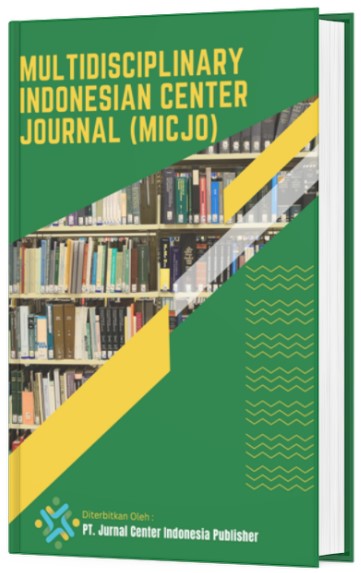THE RELATIONSHIP BETWEEN GADGET USE AND NUTRITIONAL STATUS AMONG STUDENTS AT STIKES GUNUNG MARIA TOMOHON
DOI:
https://doi.org/10.62567/micjo.v2i3.797Keywords:
gadget usage, nutritional statusAbstract
Objective: This study aims to determine the relationship between gadget use and nutritional status in students at STIKES Gunung Maria Tomohon. Method: This study used a cross-sectional study design, conducted in December 2024 at STIKES Gunung Maria Tomohon. The number of samples was 84 respondents. Data analysis used the Spearman Rank test. Results: There is no relationship between Gadget Use and Nutritional Status, (correlation coefficient is 0.078 and Sig. 2-tailed = 0.481 <0.05). Conclusion: There is no relationship between gadget use and nutritional status at STIKES Gunung Maria Tomohon and it is recommended that the campus can improve Nutrition and Health Education in nutrition education for students. The campus can hold seminars, workshops, or classes that educate students about the importance of a healthy diet, balanced eating habits, and how to choose nutritious foods.
Downloads
References
1. Indonesian Internet Service Providers Association (APJII). (2023). Internet Penetration and User Profile Survey Report in Indonesia. APJII.
2. Kariuki, J., Olando, C., & Mwaniki, P. (2021). Association between screen time and dietary habits in young adults: A systematic review. Journal of Nutrition and Health Sciences, 8(1), 12-19.
3. Ministry of Health of the Republic of Indonesia. (2021). Indonesia Health Profile 2021. Ministry of Health RI. https://p2ptm.kemkes.go.id/infographicp2ptm/obesitas/tabel-batas-ambang-indeks-massa-tubuh-imt access January 13, 2025.
4. Kim, J., Lee, J. E., & An, S. H. (2019). Associations between screen time and obesity among children and adolescents in South Korea: A nationwide population-based study. BMC Public Health, 19(1), 58.
5. Cespedes, E. M., Hu, F. B., Redline, S., Rosner, B., Gillman, M. W., Rifas-Shiman, S. L., & Taveras, E. M. (2016). Chronic sleep curtailment and adiposity. Pediatrics, 137(4), e20152850.
6. Anggraeni, S. M., Putri, D. A., & Widodo, J. (2021). Exploring the Relationship Between Gadget Use and Nutritional Status in Children: A Non-Significant Finding. Journal of Child Health, 59(3), 123-128. https://doi.org/10.1080/jch.2021.05.014
7. Widjaja, R., Riani, S., & Hidayat, M. (2018). No Significant Relationship Between Gadget Usage and Nutritional Status in Adolescents. Journal of Public Health and Nutrition, 12(4), 320-325. https://doi.org/10.1177/jphn.2018.09.301
8. Sari, D. P., Indrawati, A., & Pratiwi, A. (2019). Gadget Use and Eating Habits in Adolescents: A Correlation Study. Nutrition Research Review, 37(1), 45-50. https://doi.org/10.1002/nrr.2020.16
Downloads
Published
How to Cite
Issue
Section
License
Copyright (c) 2025 Priscila Evangelin Asa, Risca Manoppo

This work is licensed under a Creative Commons Attribution-ShareAlike 4.0 International License.


















